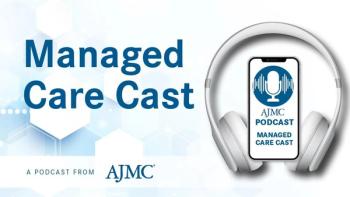
Medicare Spending for Beneficiaries With Multiple Chronic Conditions Varies Geographically
An analysis of per capita Medicare spending among beneficiaries with 6 or more chronic conditions reveals wide geographic variations in costs across the US, with similar spending levels often seen in counties neighboring one another.
An analysis of per capita Medicare spending among beneficiaries with 6 or more chronic conditions reveals wide geographic variations in costs across the United States, with similar spending levels often seen in counties neighboring one another. The authors suggested that targeted efforts to prevent chronic disease and improve disease management could help contain costs and improve outcomes in high-spending areas.
The research,
In 2014, 4.3 million of the 28 million Medicare FFS beneficiaries had 6 or more chronic conditions. This group accounted for 51% of Medicare FFS spending although they only represented 15.4% of the total beneficiaries. The national Medicare spending for these MCC6+ beneficiaries totaled $126.1 billion, with a mean county spending of $28,811 per beneficiary.
Statistical analysis indicated that US counties with high spending levels “tended to have neighboring counties with high spending, while counties with low spending levels tended to have neighboring counties with low spending.” The analysis also identified outlier counties that had high spending but were surrounded by counties with low spending or counties with low spending surrounded by counties with high spending.
The counties with high per capita spending on Medicare FFS MCC6+ beneficiaries were most prominently concentrated in northern Louisiana, western Alabama, northern Texas, and central Wyoming. Northeast Wisconsin, northwest Michigan, western Oregon, and upstate New York generally had low levels of spending on these beneficiaries. Some high-spending outliers, where a county with high spending was surrounded by counties with low spending, were seen in southern Nevada, southwestern Utah, and central Oregon. Low-spending outlier counties were scattered throughout several states including Nebraska, Kansas, and Texas.
The geographic areas identified as high-spending counties could be targeted with cost-saving chronic disease prevention efforts that include preventive healthcare, public health policies, and public engagement and education. These areas could also benefit from targeted chronic disease management programs that could help reduce costs and improve outcomes for beneficiaries with these conditions.
The study authors recommend that that further research be conducted to identify factors that affect the geographic pattern of spending for MCC6+ beneficiaries, including the risk factors and costs of the chronic conditions most prevalent in each county. They also recommend an exploration of geographic variations in care utilization patterns and how these affect the costs of chronic disease care.
Newsletter
Stay ahead of policy, cost, and value—subscribe to AJMC for expert insights at the intersection of clinical care and health economics.














































